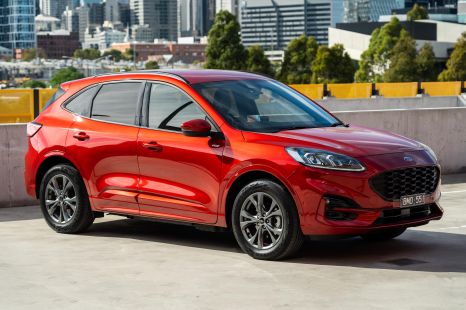

Damion Smy
Ford Escape PHEV recalled for fire risk
7 Hours Ago
The Hyundai Ioniq 5 N is filled to the brim with features that are set to make you smile from ear to ear. How does it fare on local soil?
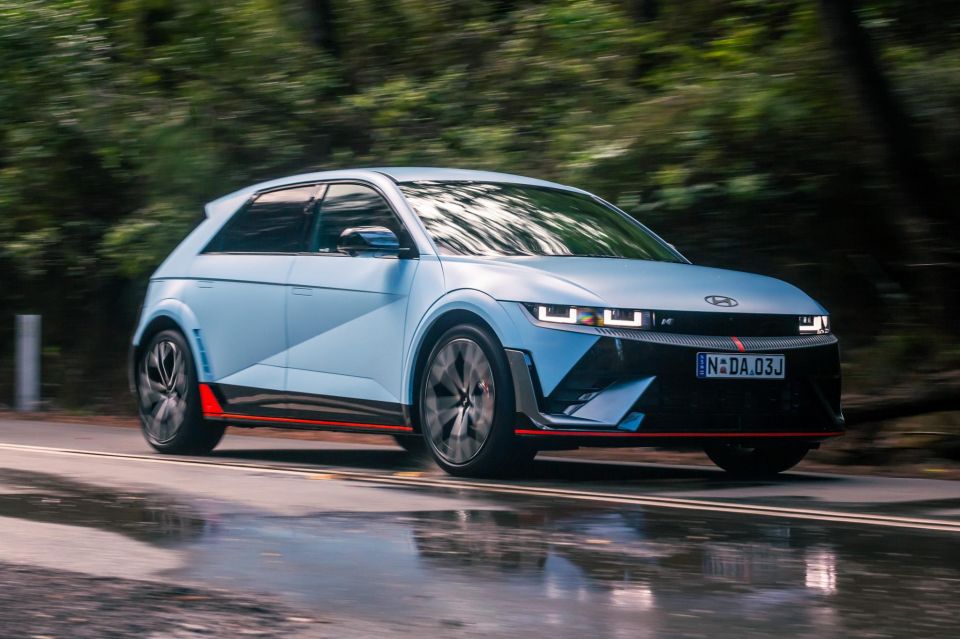
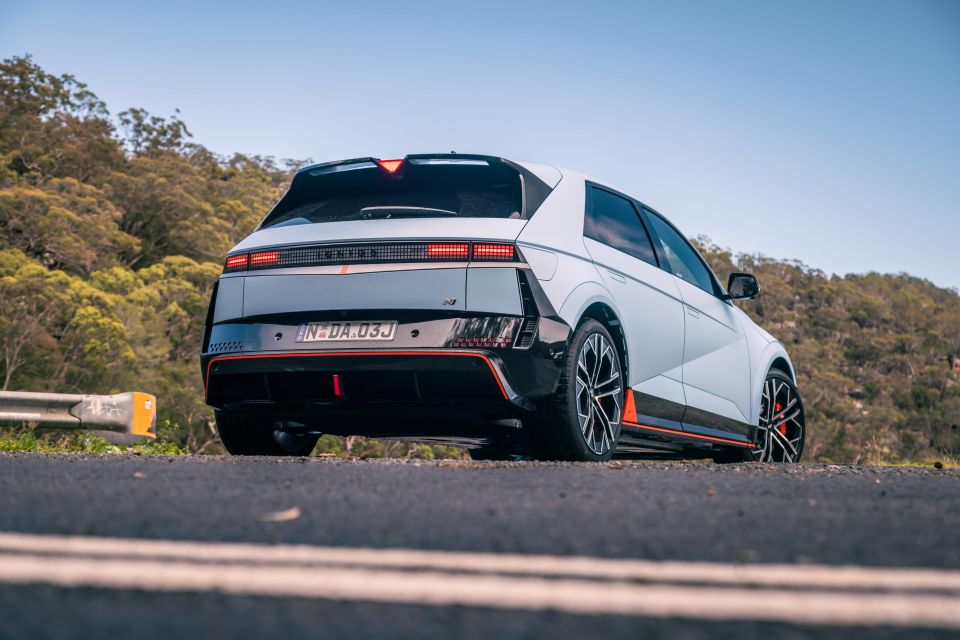

Quickly see how this car stacks up against its competition. Select any benchmark to see more details.
Where expert car reviews meet expert car buying – CarExpert gives you trusted advice, personalised service and real savings on your next new car.
The Hyundai Ioniq 5 N is the company’s first all-electric N vehicle and it has a hefty title to live up to, especially as it’s a flagship for the brand.
Hyundai’s range of N combustion-powered vehicles have all been engaging and exciting to drive to date, though until now we were yet to properly see how this translated to an electric vehicle on Australian soil.
Hyundai Australia has given the Ioniq 5 N a local electronically controlled suspension (ECS) and damper tune that’s unique to our market. It’s the first car to receive a local suspension tune since the i30 Sedan, as well as the Genesis G80 and GV80 received theirs in 2019.
Ahead of the Ioniq 5 N’s local launch, CarExpert was invited to briefly experience one of the first Ioniq 5 N examples to be registered in Australia on some of the roads that were used to dial in the local suspension tune.
Is the Hyundai Ioniq 5 N befitting of the N moniker and does it take the brand to new heights? Read along to find out.

All prices are before on-road costs
Options include matte paint ($1000) and a glass Vision Roof ($2000).
To see how the Ioniq 5 compares to its rivals, line it up side-by-side with any car you want using our comparison tool.
Buy your new car without the stress. It's fast, simple and completely free.

Great service from Travis and team, second time I have used this business would not hesitate to recommend them to anyone
Craig C.
Purchased a Ford Ranger in Sunshine Coast, QLD
CarExpert helped Craig save thousands on his Ford Ranger, now let us save you on your next new car.
Find a dealWalking up to the Hyundai Ioniq 5 N the car has some serious presence. It’s noticeably more sporty-looking than the regular Ioniq 5 due in part to over-the-top body kit, as well as the large 21-inch alloy wheels which covering the huge four-piston front and single-piston rear brake calipers.
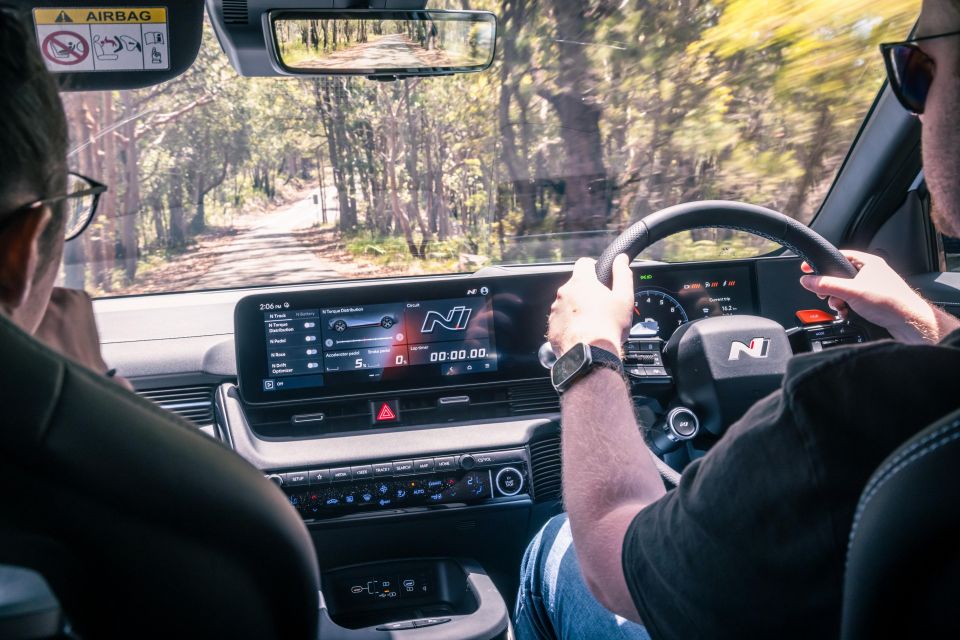
Although the Ioniq 5 N may look like from a hot hatch from afar, when you get closer and hop into the car it’s more crossover-like. You don’t need to climb down into the car, but can rather just step across.
On the inside the Ioniq 5 N immediately differentiates itself from the regular Ioniq 5 by its sporty bucket front seats. They are a one-piece unit that have a leather/Alcantara upholstery, along with an illuminated N badge on the backrest.
Like most bucket seats, the Ioniq 5 N’s front bucket seats hug you in tightly and don’t send you flying around when driving spiritedly. They’re also very supportive in other areas which make them comfortable for longer periods of time.
The front seats are only manually adjustable, which is surprising given its flagship status. For context, the related EV6 GT also has manually adjustable front seats which allow them to be mounted closer to the floor.
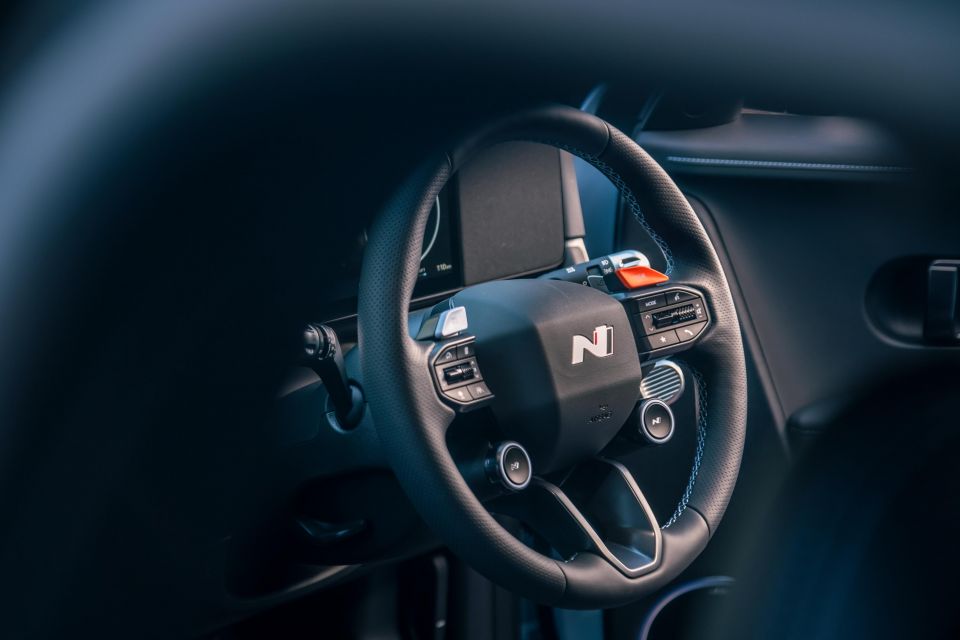
Despite being manually adjustable, the front seats offer both heating and ventilation as standard. This is the first time Hyundai has offered ventilation in a bucket seat before.
Both the heating and ventilation functions on the front seats, as well as the heated steering wheel, are toggled on and off with the press of a touch-capacitive button and then using the touchscreen. This process can a little tedious and I’d much prefer traditional buttons.
Ahead of the driver is a thick leather-wrapped steering wheel with perforations to keep your hands nice and cool when you’re driving along. There are also a heap of buttons on the steering wheel buttons pertaining to functions including multimedia, cruise control and ‘N’ functions.
The latter of these buttons are different shapes and colours which make the steering wheel look button-heavy, busy and almost overwhelming. Some parts of the steering wheel look racing car-inspired.
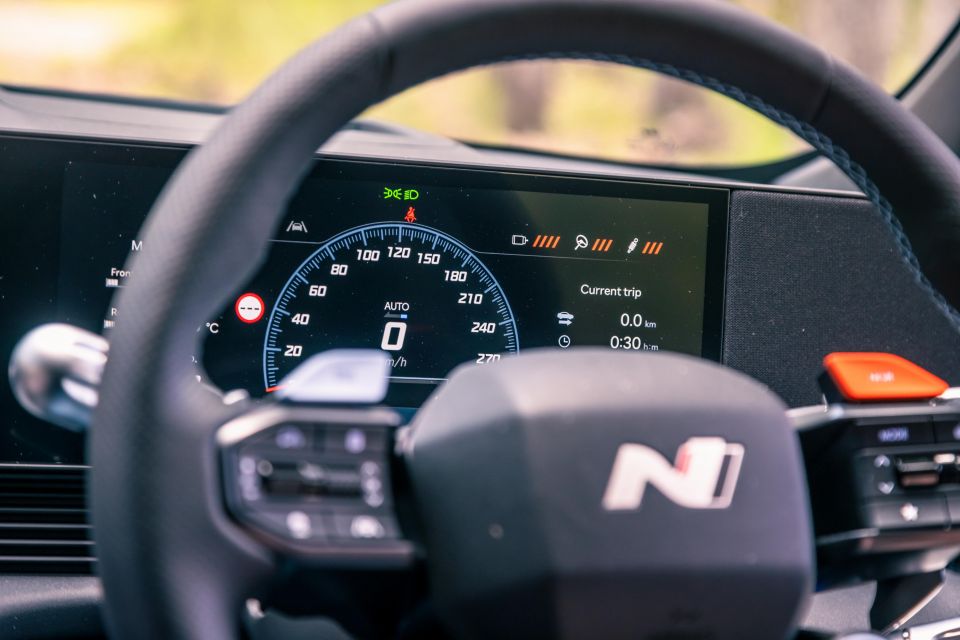
On the steering column there are paddle shifters that can be used to adjust the amount of regenerative braking in their typical form, or as a proper paddle shifters when the N e-shift function is selected.
There’s also a gear selector that juts out from the steering column and is common among a number of Hyundai models now. You twist the end of the knob away from yourself to activate ‘Drive’ and towards yourself to activate ‘Reverse’. ‘Park’ is selected by pressing the end.
Behind the steering wheel is a large 12.3-inch digital instrument cluster that, along with the 12.3-inch touchscreen infotainment system runs Hyundai’s latest connected car Navigation Cockpit (ccNC) operating system and offers over-the-air (OTA) software updates.
The digital instrument cluster has many different looks and layouts that can be adjusted depending on the drive mode. There are also a number of lights, colours and animations that flash up on the screen and add to the exhilarating experience.
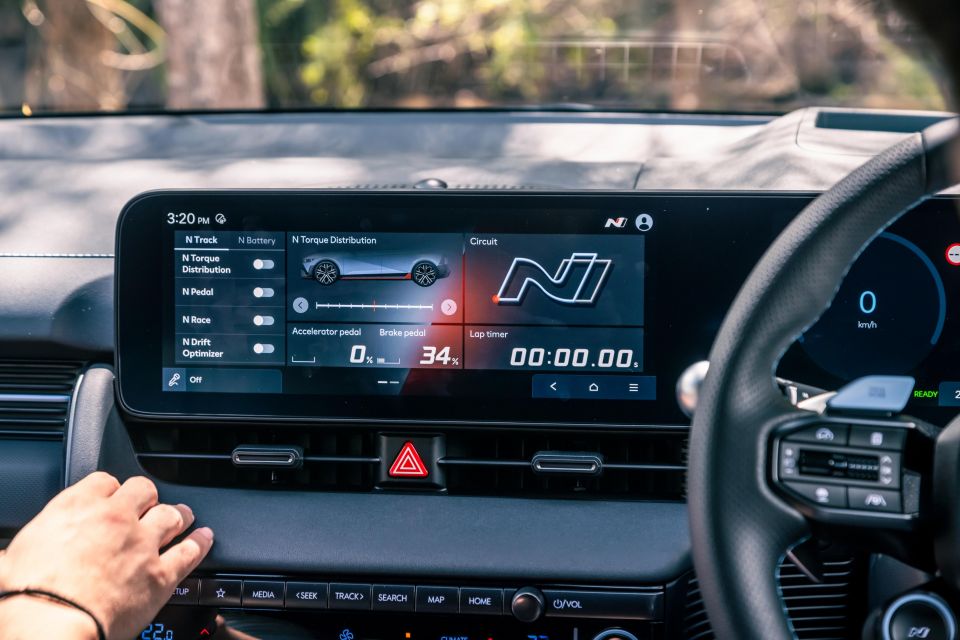
On the dashboard there’s a large head-up display that dominates the windscreen and can be configured with two different layouts, depending on the drive mode. I personally prefer the layout when you’re in an ‘N’ drive mode.
I didn’t get much time to properly dive into the Ioniq 5 N’s touchscreen infotainment system though it does looks high-resolution and new pages loaded snappily.
The vehicle I drove had wireless Apple CarPlay compatibility in addition to the wired form. I didn’t connect my phone to the car’s infotainment system, though we know this feature will start rolling out to other Hyundai vehicles with the ccNC operating system in the form of an OTA software update imminently.
Like all Hyundai N vehicles to date, the Ioniq 5 N has an extensive ‘N Mode’ infotainment section which is home to a number of the high-performance features and functions. You can also customise the home page of this section using widgets, start lap timers on mapped circuits, and also create ‘N Custom’ driving modes, among other functions.
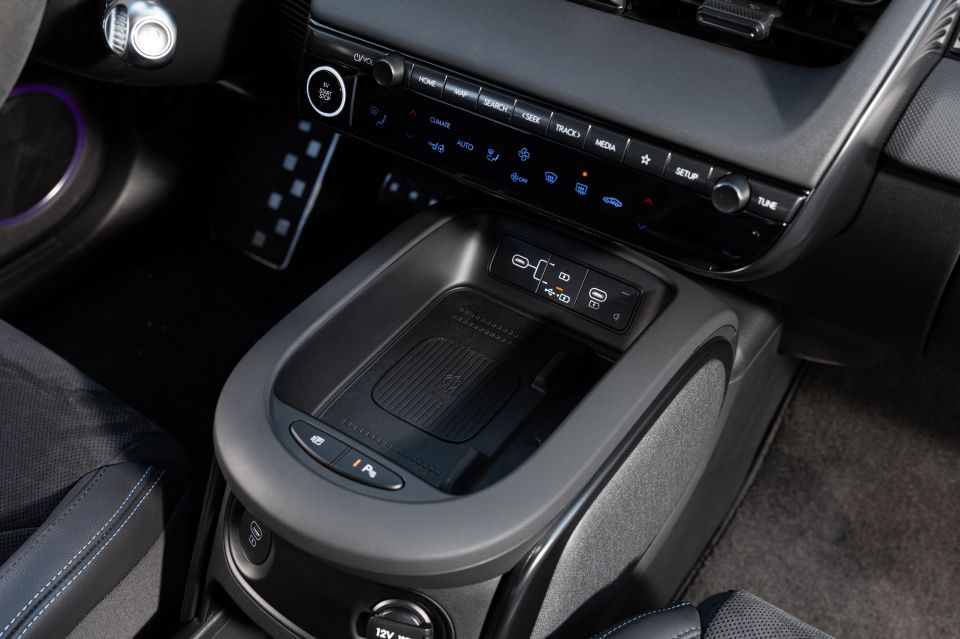
Beneath the touchscreen infotainment system is a new fixed centre console that is another feature that differentiates the high-performance Ioniq 5 N from its regular counterpart. This houses some USB-C ports and a wireless charger.
Another feature this fixed centre console includes is knee rests. This is an incredibly handy and important feature if you plan to drive the Ioniq 5 N on track as you can brace yourself and make sure you’re not flailing around when cornering.
Looking around the interior of the Ioniq 5 N there are a lot of black and dark finishes that strangely make the car feel a little closed in. I suppose this could be on purpose to make the large car appear smaller.
The car I drove wasn’t equipped with the glass Vision Roof which is a $2000 optional extra. This could potentially add a bit of light and ambience to the cabin, however I don’t feel this really matches up with the high-performance image of the Ioniq 5 N.
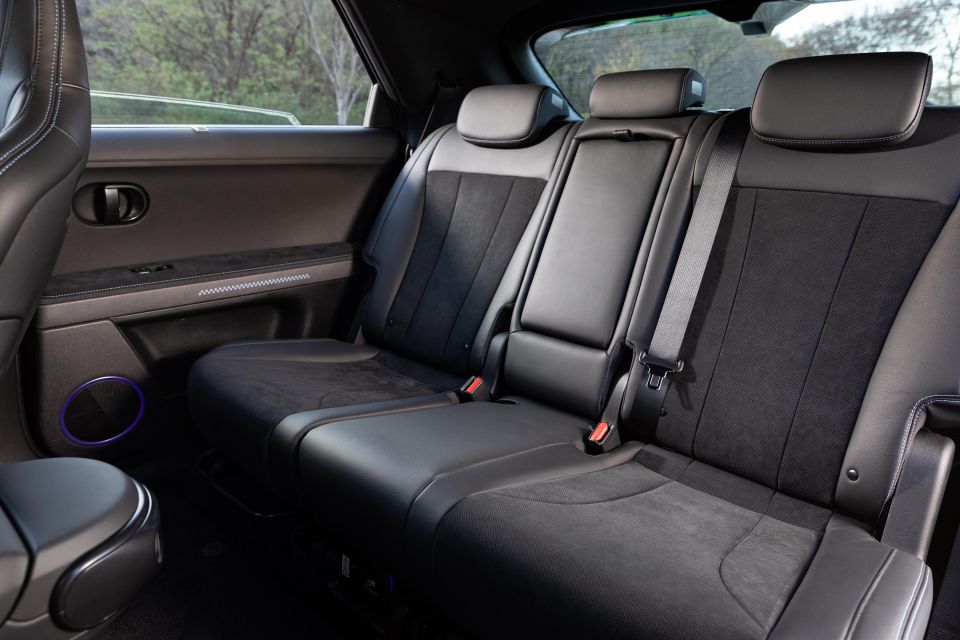
Moving to the second row I was blown away with much space is on offer. I always forget the Ioniq 5 has a longer wheelbase than the Palisade, and it really shows with how much leg room there is.
In terms of second-row amenities there are B-pillar mounted air vents, USB-C ports, as well as a fold-down armrest with cupholders.
Moving around the boot, the tailgate is powered which is to be expected in a flagship vehicle.
Once the tailgate is open however the boot space on offer doesn’t appear to be that big as the load cover creates a narrow envelope.
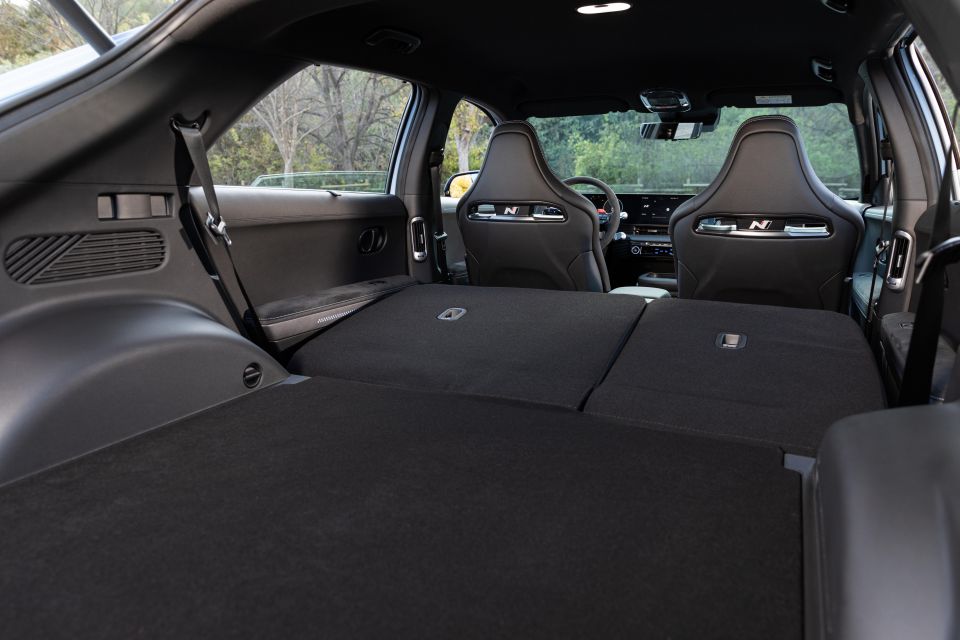
Hyundai officially quotes a boot capacity of 480 litres with the second row of seats upright, which expands to 1540 litres with them folded.
Like the majority of electric vehicles (EVs), the Ioniq 5 N doesn’t come with a spare tyre at all. This can frustrating if you’re doing a longer road trip away from towns and get caught out with a flat tyre.
The last thing I’ll mention in this section is the Ioniq 5 N comes with a proper rear wiper! This has been a gripe of regular Ioniq 5 owners for a while now and I wouldn’t be surprised if it makes its way in an update of some variety.
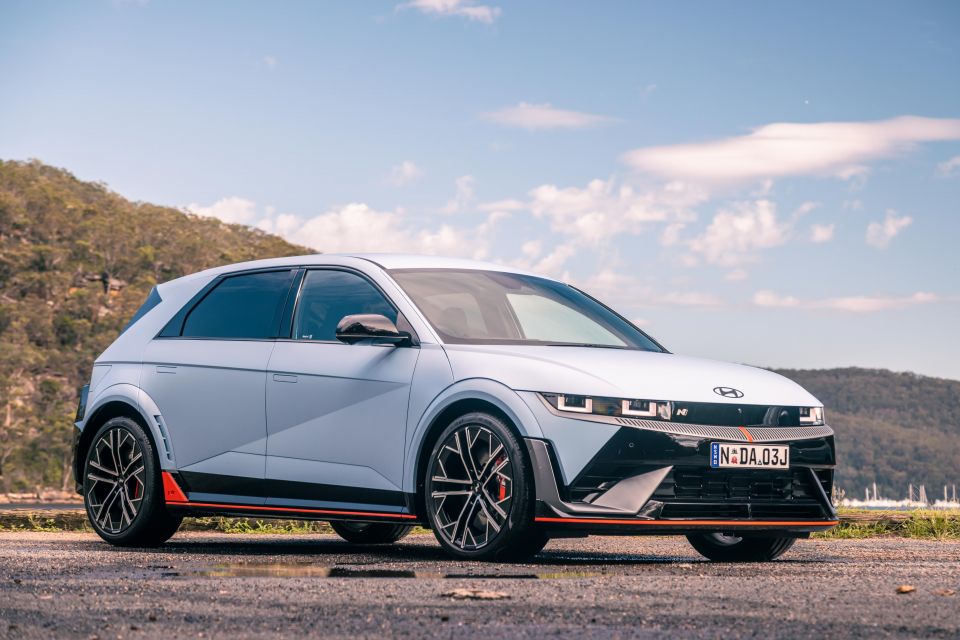
| Model | Ioniq 5 N |
|---|---|
| Front electric motor power | 166kW (175kW with N Grin Boost) |
| Front electric motor torque | 350Nm (370Nm with N Grin Boost) |
| Rear electric motor power | 282kW (370kW with N Grin Boost) |
| Rear electric motor torque | 390Nm (400Nm with N Grin Boost) |
| Total system output | 448kW (478kW with N Grin Boost) |
| Total system torque | 740Nm (770Nm with N Grin Boost) |
| Battery | 84kWh lithium-ion battery |
| Driven Wheels | All-wheel drive |
| Claimed Range | 448km (WLTP) |
| 0-100km/h sprint time | 3.4 seconds |
| Top Speed | 260km/h |
| Weight | 2230kg (tare) |
| Energy consumption (claimed) | N/A |
| Energy consumption (as tested) | 35kWh per 100km (performance testing) |
To see how the Ioniq 5 compares to its rivals, line it up side-by-side with any car you want using our comparison tool.
It’s worth flagging this Hyundai Ioniq 5 N we experienced is a proper production example and not a prototype. It’s actually one of the first examples to be registered in Australia.
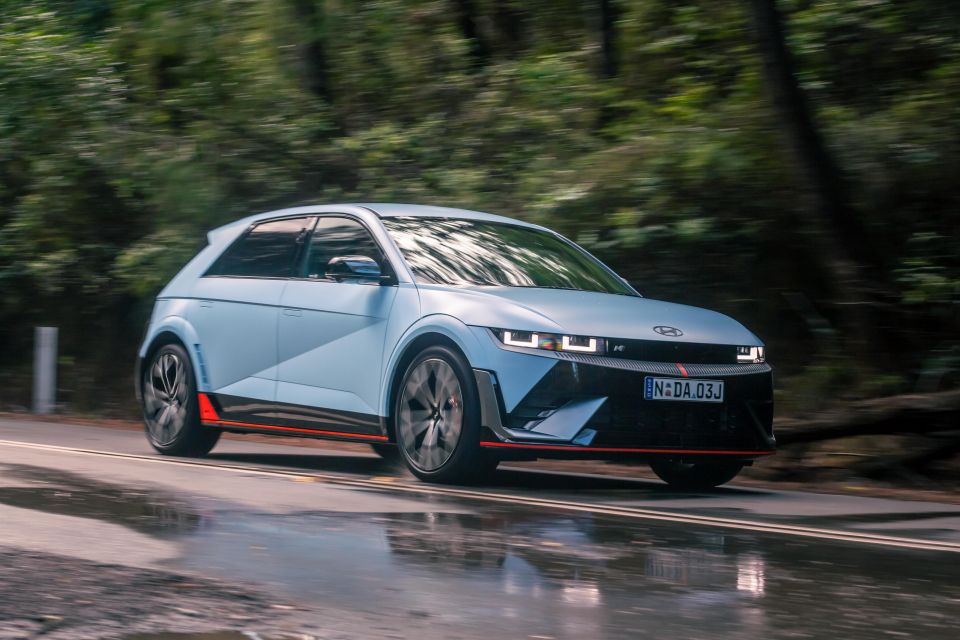
We also only got the chance to drive the Ioniq 5 N on specific roads around the Akuna Bay area in the northern suburbs of Sydney for an hour and a half.
This is where the Hyundai Australia team conducted testing on this car as part of the local electronic controlled suspension (ECS) and damper tuning programme. With this in mind, we’ll withhold full judgement on the Hyundai Ioniq 5 N until we can experience it on more roads and for longer.
There are so many different ways to drive and experience this high-performance electric vehicle (EV) that it can become a little overwhelming at first. Once you’re acquainted with the car and understand what each function does however, you’re able to dial it in and customise exactly how you want the driving experience to be.
Starting up the Ioniq 5 N is a largely silent affair as with the press of the starter button this causes a short bing to sound when the car is ready to drive.
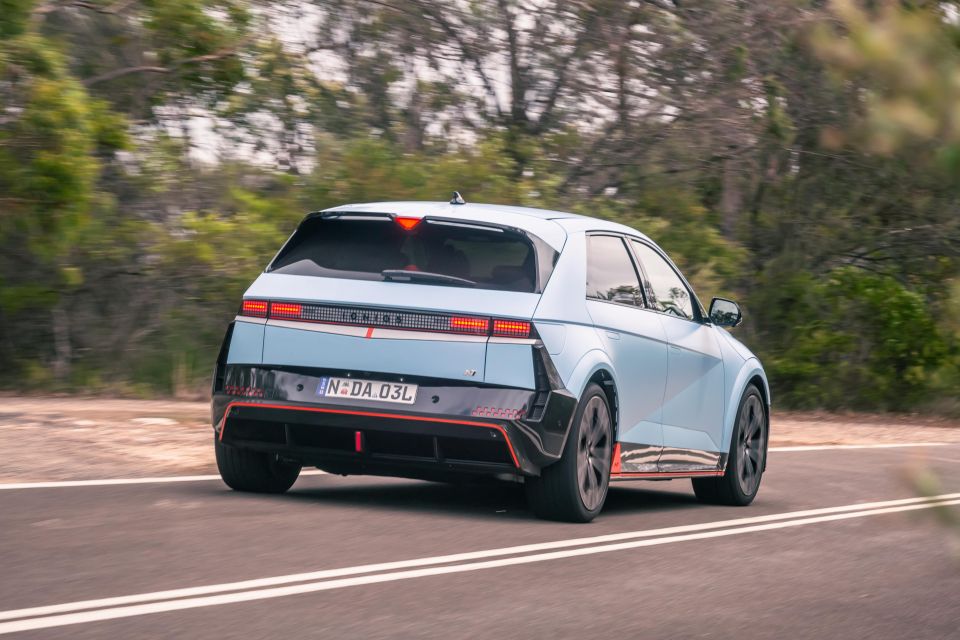
If you want the Ioniq 5 N to be silent when driving, like virtually all other EVs, you can do this if you’d prefer. On the flip side, however, you’re able to dial up the noise as much as you’d like both inside and out. There are eight speakers inside the Ioniq 5 N that can play sound, as well as two exterior speakers.
The Ioniq 5 N currently comes with three artificial propulsion sounds including Ignition, which is intended to replicate a combustion-powered N car with pops and crackles; Evolution, which is intended to amplify the electric nature of the car and be like the RN22e concept; and Supersonic, which is intended to sound like a fighter jet and includes sonic booms.
I know these sound really corny on paper, but in practice they really bring an added sensory element to the car. They’re also arguably more interesting than BMW’s Hans Zimmer artificial propulsion sounds.
My favourite artificial propulsion sound in the Ioniq 5 N was surprisingly the Ignition profile as it sounded the most natural. It also wasn’t as droney as the Supersonic and Evolution sound profiles when cruising along.
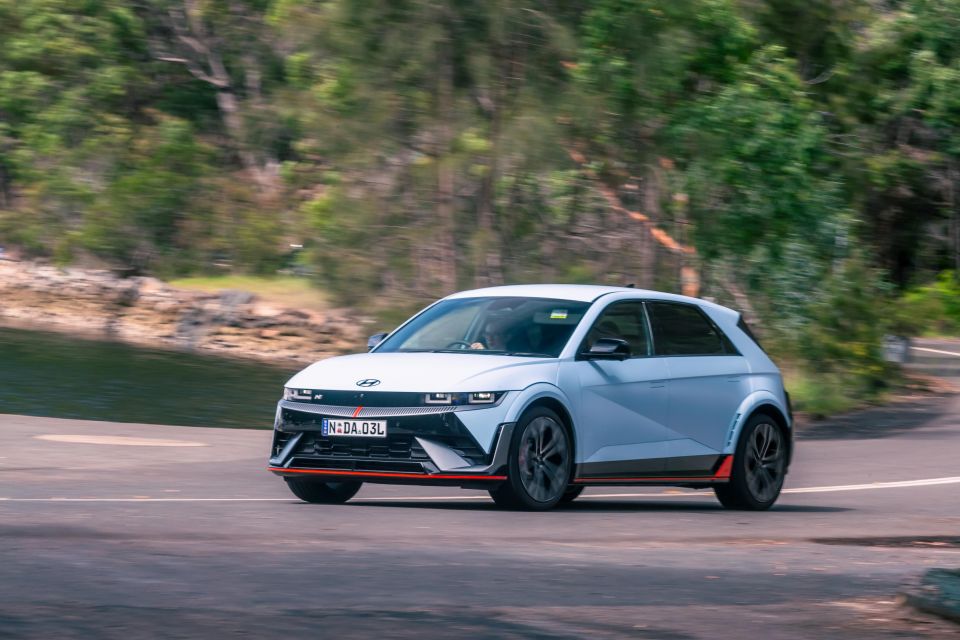
Despite this, the Ignition profile did become a little monotonous after a while. Thankfully Hyundai has a solution to this with its so-called N e-shift function.
This N e-shift function simulates Hyundai N’s eight-speed dual-clutch transmission, complete with noticeable jolts upon gear changes. Like the artificial propulsion sounds, the N e-shift function does seem like a gimmick at first, but it really makes the car feel so much more engaging.
In its regular form the car automatically changes gears for you and can kick down gears if you press the accelerator harder. You’re also able to take control of the gears using the paddle shifters if you’d like.
This is arguably when the Ioniq 5 N feels the most engaging as you feel completely in charge of where the car is pointing, how fast you’re travelling, what ‘gear’ it’s in, and how hard it’s ‘revving’.

Where expert car reviews meet expert car buying – CarExpert gives you trusted advice, personalised service and real savings on your next new car.
I really wasn’t expecting to want to drive the Ioniq 5 N like a combustion-powered car, yet here I was. For the record it was also really freaking good.
My favourite part about manually changing simulated gears in the Ioniq 5 N with the N e-shift function and the paddle shifters is you could limit bash the car. This is when the most noise and drama happens.
It goes without saying the Ioniq 5 N is incredibly fast. With total system outputs of 448kW and 740Nm the electric hot hatchback/crossover is definitely no slouch.
You’ll be able to beat virtually every car the Ioniq 5 N comes across at the traffic lights, as like all EVs, the full amount of the electric motor’s torque is available from a standstill.
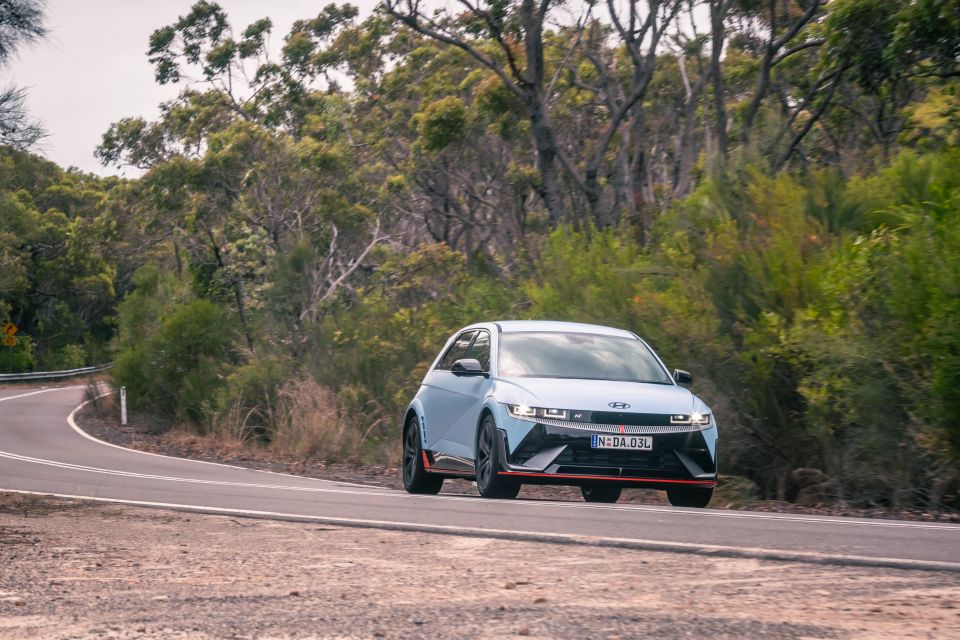
If 448kW and 740Nm isn’t enough for you however, the Ioniq 5 N comes with a N Grin Boost function that unlocks an additional 30kW and 30Nm for 10 seconds. You activate this function by pressing a button on the steering wheel and then holding on for dear life.
Beyond all the functions and features I’ve discussed thus far, the Ioniq 5 N does come with the typical Normal, Eco and Sport drive modes. There are also N and two N Custom drive modes.
The latter allows you to manually control and setup how you would like the electric motors, steering, suspension, electronic limited-slip differential (e-LSD), electronic stability control (ESC), and artificial propulsion sound to be.
The N Custom drive modes are incredibly handy if you want the Ioniq 5 N to be as powerful and responsive as possible, but you also want the most comfortable suspension tune, for example.
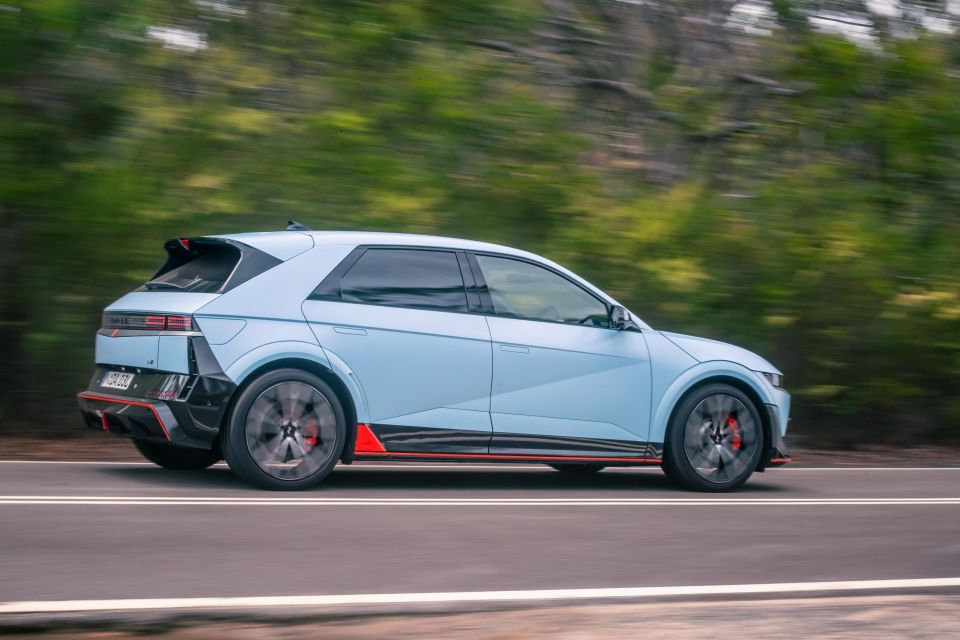
Hyundai Australia has completed a local ECS tune for the Ioniq 5 N, particularly for the Normal and Sport drive modes. The N driving mode on the other hand is shared with Europe, along with a number of other calibrations on the car.
Despite the Ioniq 5 N being on some properly rough roads around Akuna Bay and in a sporty driving mode for the most part, the car never felt too harsh like some high-performance cars can.
The Ioniq 5 N’s chassis also felt really capable and dynamic, with its e-LSD satisfyingly kicking in when you boot the accelerator out of a corner.
You can drive the Ioniq 5 N properly hard and it feels like it’s begging for more. What makes it this even more bizarre is after you’ve finished driving ‘spiritedly’, don’t be surprised if the car’s brakes are stone cold.
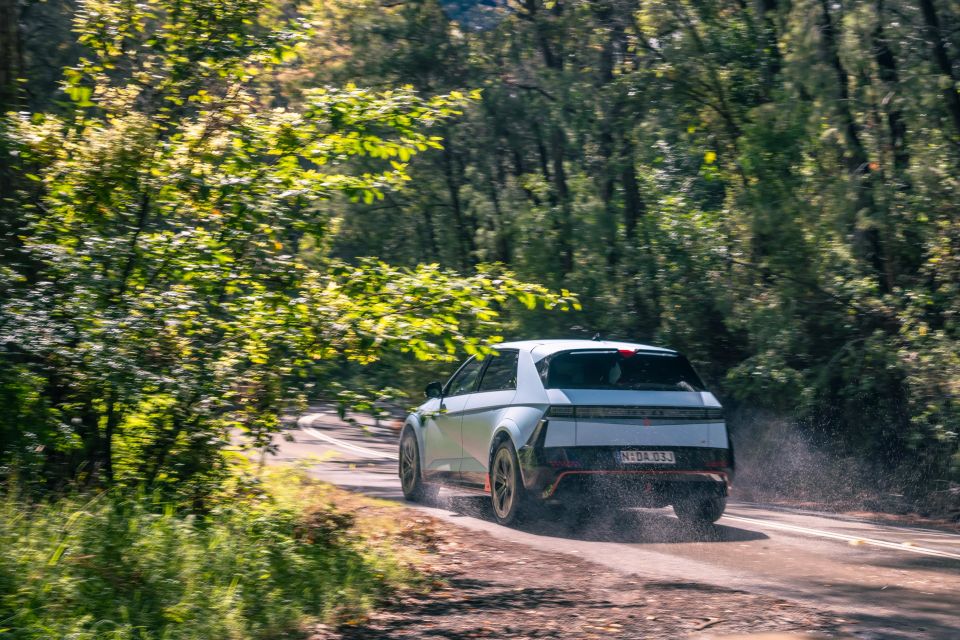
This is because the Ioniq 5 N is capable of producing up to 0.6G of decelerative force through regenerative braking alone. There are also four-piston brake calipers on the front and single-piston brake calipers on the rear if this isn’t good enough.
Lastly, there are a plethora of modes and functions the Ioniq 5 N is capable of but should be used on a race track with controlled conditions. We didn’t get the opportunity to try these out this time, but it won’t be too long before we get to try them out on local soil.
Hyundai Australia still hasn’t released a full list of standard equipment for the Ioniq 5 N at this stage.
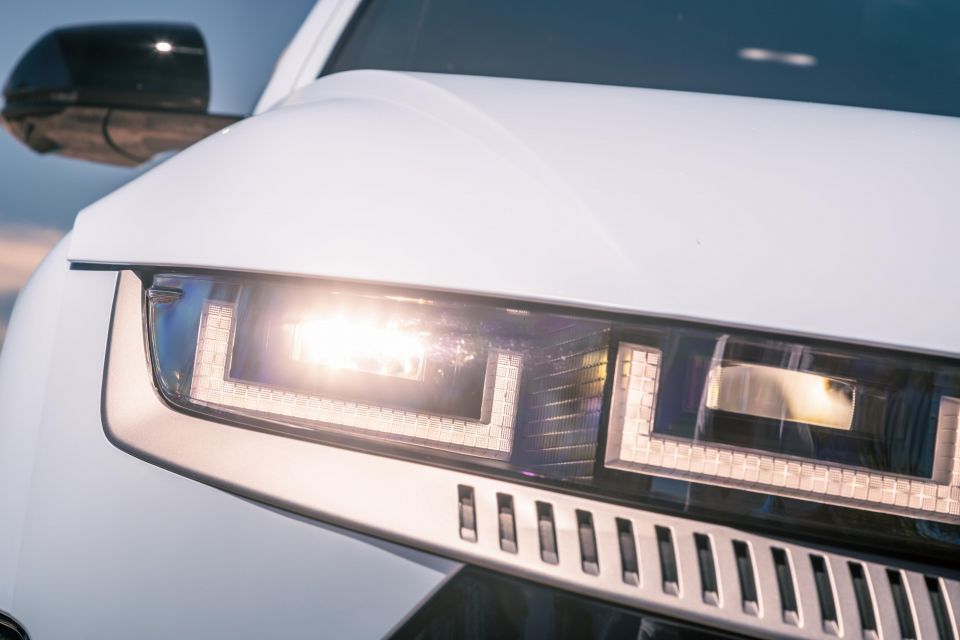


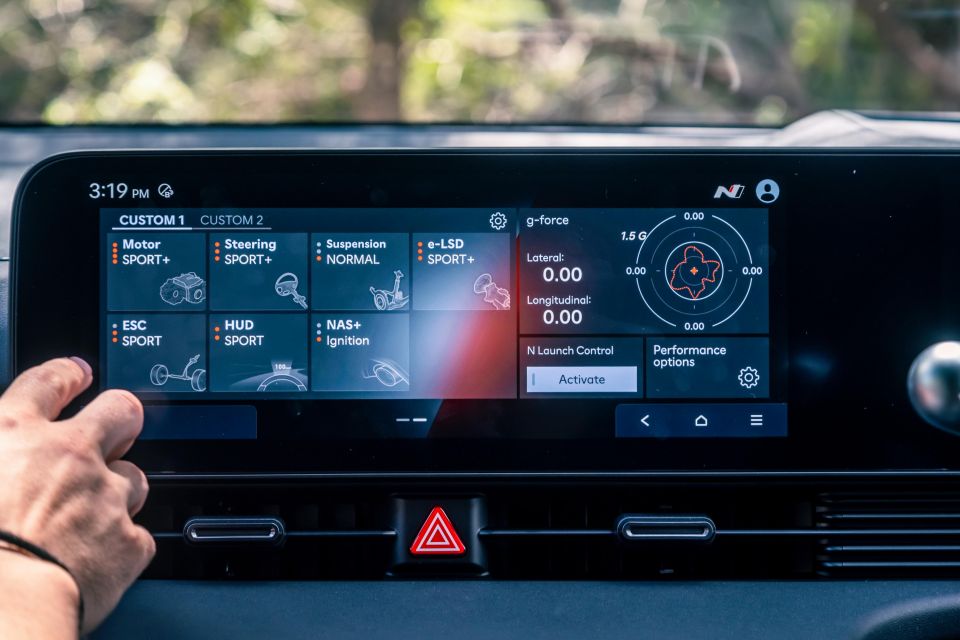
Expect the following equipment to be standard:
Available exterior colours comprise:
A glass Vision Roof is available as an optional extra for $2000.
Hyundai Australia hasn’t released a full list of standard safety equipment either, while the Ioniq 5’s five-star ANCAP rating hasn’t been extended to the N, at least not yet.
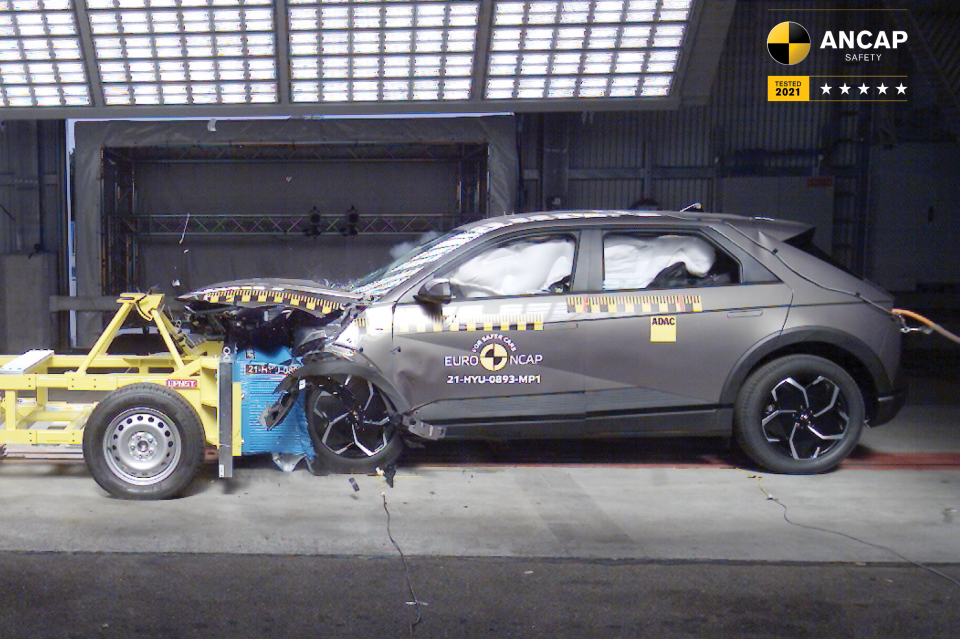
We would expect the N to mirror the rest of the Ioniq 5 range in terms of safety equipment.
All Ioniq 5 models come standard with the following kit in Australia:
The forward autonomous emergency braking (AEB) feature, which Hyundai calls Forward Collision-Avoidance Assist, includes the following functionality:
Hyundai has yet to release service pricing and warranty information for the Ioniq 5 N.
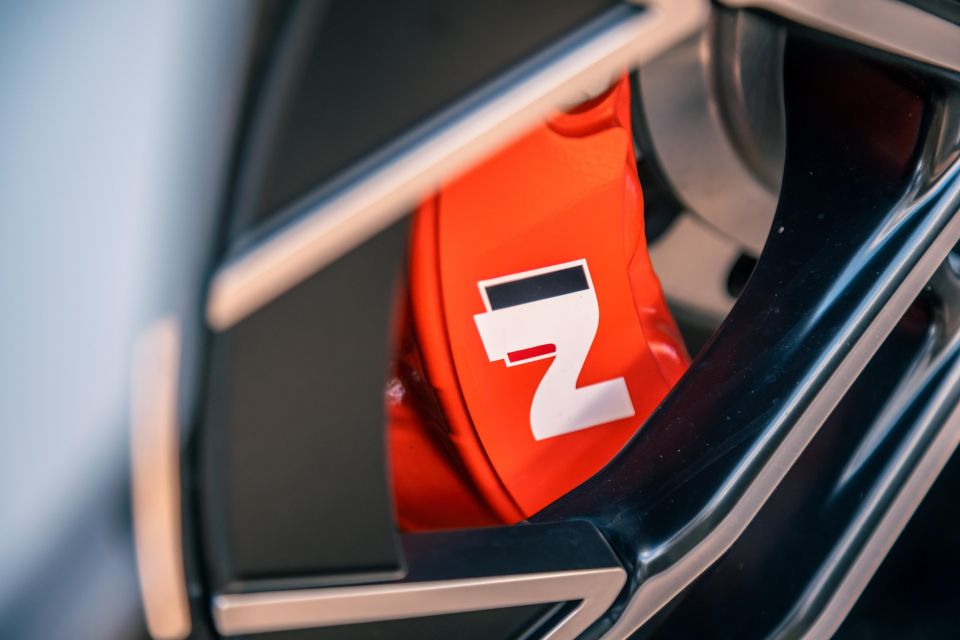
The core Ioniq 5 range is backed by a five-year, unlimited-kilometre warranty and an eight-year, 160,000km high-voltage battery warranty.
Servicing is required every 24 months or 30,000 kilometres, whichever comes first, in the regular Ioniq 5. The first three services are capped at $570, $1090 and $570, respectively. It’s unclear if the N’s visits will be any pricier.
The Hyundai Ioniq 5 seems to be always at odds with itself – is it an electric hatchback or an SUV?
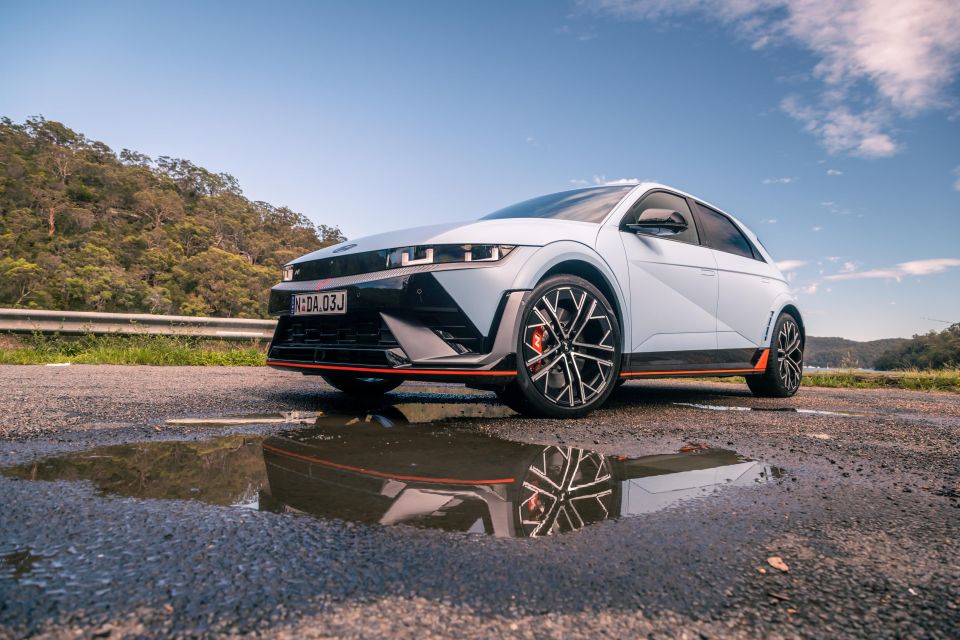
By throwing in a gut-load of extra power, I’m not certain if this has been made any clearer. The Ioniq 5 N still looks like a hot hatch from afar though once you hop inside and see the space on offer it’s definitely more crossover-like.
Despite this, the Hyundai Ioniq 5 N is an absolute beast of a car that is arguably one of the most exhilarating electric vehicles (EVs) I’ve experienced to date. Every time you stab the accelerator, grip hard around a corner, or feel the e-LSD kick in, you can’t help but grin from ear to ear.
I really wasn’t expecting to want to drive the Ioniq 5 N like a combustion-powered car and love it as much as I did. The artificial propulsion sounds and N e-shift functions add so much to the car and allow you to feel so much more connected.
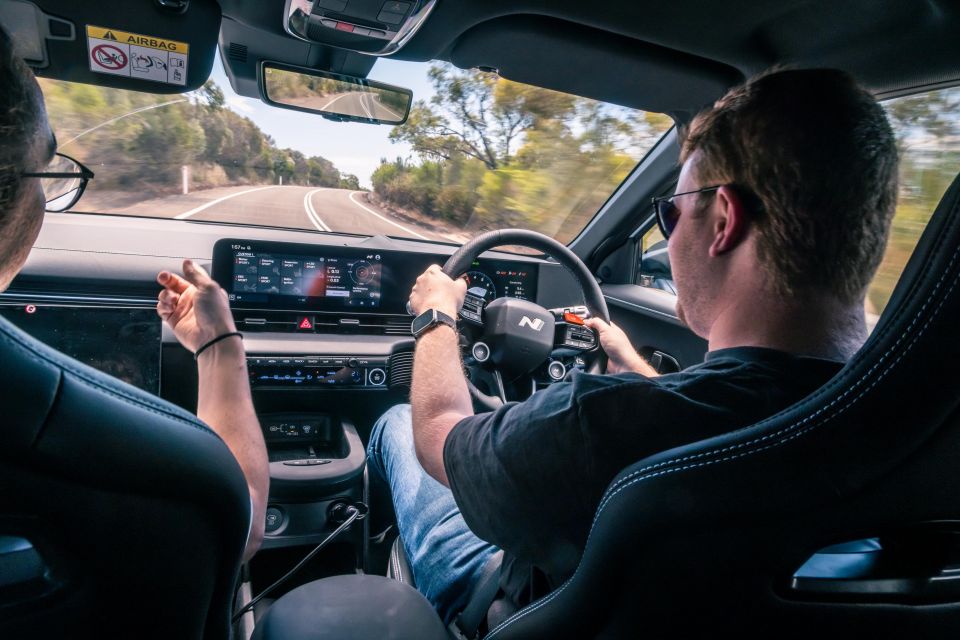
It’s not all sunshines and roses though; as the amount of modes, functions and pieces of information to learn can be quite overwhelming at first. I see this being the most troubling for everyday punters that aren’t die-hard driving enthusiasts.
The Ioniq 5 N is also notably more expensive than a number of key rivals, including the Kia EV6 GT and Tesla Model Y Performance.
If you’ve gotten this far and still think this high-performance electric Hyundai is filled to the brim with gimmicks, I implore you to give the Ioniq 5 N a test drive once it’s available and let us know if it changes your mind – because it should.
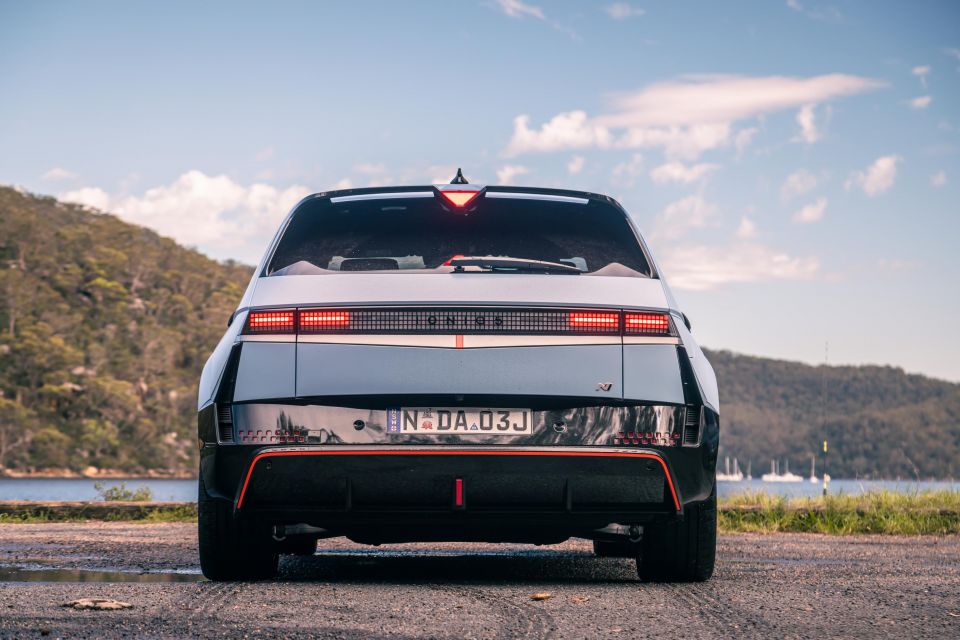
Click an image for the full gallery
BUY: Hyundai Ioniq 5 MORE: Everything Hyundai Ioniq 5
Where expert car reviews meet expert car buying – CarExpert gives you trusted advice, personalised service and real savings on your next new car.
Jack Quick is an automotive journalist based in Melbourne. Jack studied journalism and photography at Deakin University in Burwood, and previously represented the university in dance nationally. In his spare time, he loves to pump Charli XCX and play a bit of Grand Theft Auto. He’s also the proud owner of a blue, manual 2020 Suzuki Jimny.


Damion Smy
7 Hours Ago
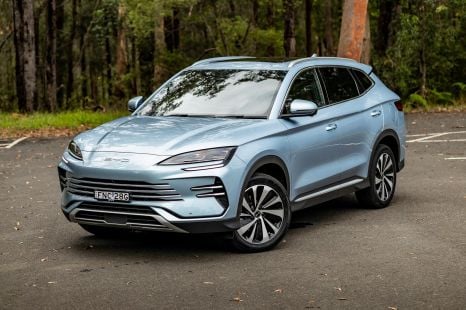

Josh Nevett
8 Hours Ago


Max Davies
16 Hours Ago


Ben Zachariah
1 Day Ago
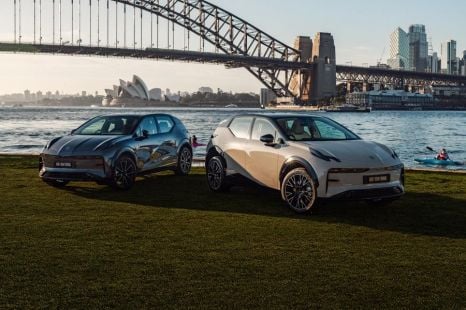

Max Davies
1 Day Ago


Damion Smy
2 Days Ago